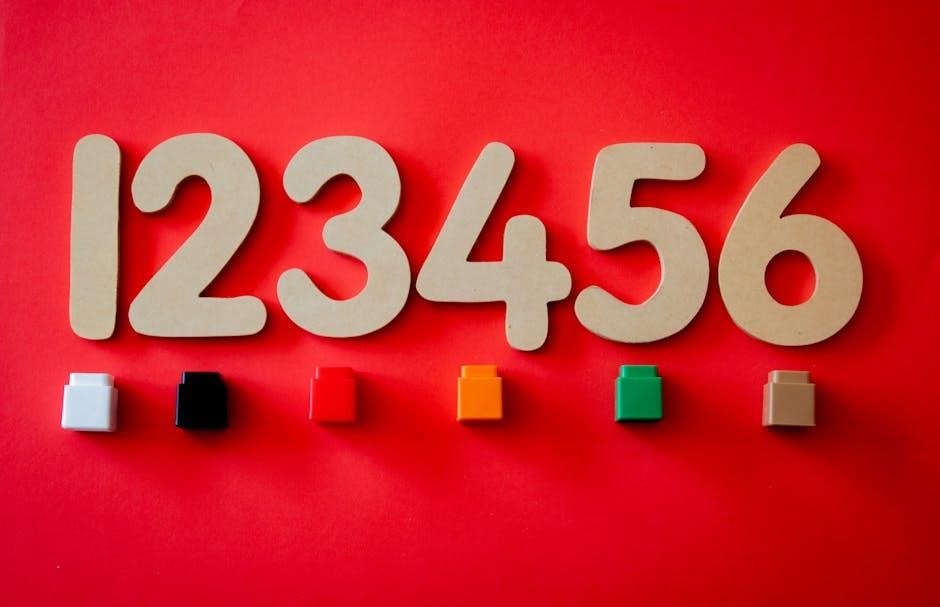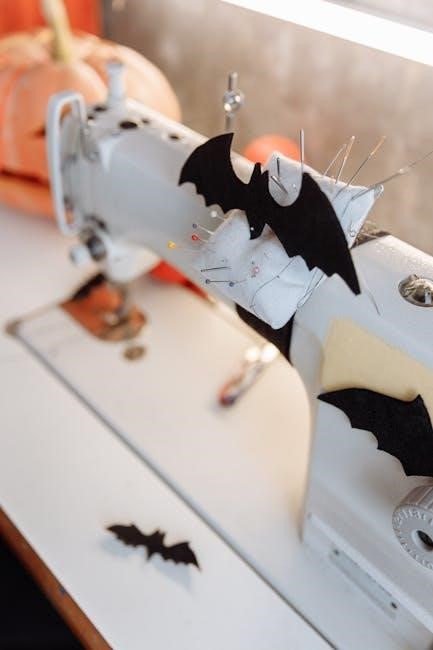one dnd warlock pdf
Discover the Warlock’s mystique and versatility through comprehensive guides like MonarchsFactory’s PDF, uncovering dark magic, otherworldly pacts, and character customization essentials for D&D enthusiasts.
1.1 What is a Warlock?
A Warlock is a spellcaster who derives their power from an otherworldly being or force, such as a demon, fey, or other entity. This class combines arcane magic with a mysterious, often dark, flair. Warlocks are known for their versatility, blending ranged attacks, eldritch magic, and cunning tactics. Unlike wizards, their power comes from a pact rather than study, making them unique in both lore and gameplay.
Warlocks can channel their energy into devastating spells like Eldritch Blast or manipulate enemies with cursed glaives. Their reliance on charisma makes them natural performers and negotiators, adding depth to roleplaying. Whether summoning shadows or wielding hellish fire, the Warlock embodies a blend of intrigue and raw magical power, making them a compelling choice for players seeking a dynamic and enigmatic character.
1.2 Warlock Class Features
Warlocks possess a unique array of class features that set them apart from other spellcasters. They gain access to Eldritch Blast, a foundational cantrip that scales with level, and Invocations, which provide powerful magical and combat utilities. Warlocks also benefit from Curse and Hex abilities, allowing them to debilitate enemies and enhance their spells. Their spellcasting is fueled by Warlock Spell Slots, which recover on a short rest, offering flexibility in managing magic.
Additionally, Warlocks can choose from various Pact of the options, such as Tome, Chain, or Ring, each granting unique abilities like bonus spells or enhanced summoning. These features collectively make the Warlock a formidable and adaptable class, capable of excelling in both combat and roleplay scenarios.
1.3 History of the Warlock in D&D
The Warlock class was first introduced in the 3rd Edition of Dungeons & Dragons, offering a unique blend of magic and mystery. Drawing inspiration from folklore and dark fantasy, the Warlock was designed to represent a spellcaster bound to an otherworldly entity. Over the years, the class has evolved, with 5th Edition refining its mechanics and lore. Early editions emphasized the Warlock’s infernal or fey origins, while modern interpretations allow for a broader range of patrons. Resources like the MonarchsFactory PDF provide insights into the class’s history and customization options. The Warlock’s popularity stems from its versatility, combining spellcasting with martial capabilities, making it a favorite among players seeking a complex, narrative-driven character. This rich history has cemented the Warlock’s place as a cornerstone of D&D’s spellcasting classes.

Choosing a Subclass
Explore the diverse Warlock subclasses, each offering unique abilities and playstyles, and discover how guides like MonarchsFactory’s PDF can help you select the perfect fit for your character.
2.1 Overview of Warlock Subclasses
The Warlock class in D&D offers a variety of subclasses, each with unique abilities and themes. The Hexblade draws power from the Shadowfell, granting curse-like abilities, while The Fiend channels infernal might, summoning hellish powers. The Archfey taps into the Feywild, offering enchantments and illusions. The Great Old One delves into cosmic horrors, granting psionic and mind-affecting spells. The Undying and The Celestial provide more recent additions, focusing on lich-like immortality and divine magic, respectively. These subclasses cater to diverse playstyles, from combat-focused to roleplay-heavy narratives. Guides like MonarchsFactory’s PDF detail these options, helping players choose the subclass that aligns with their character’s lore and gameplay preferences, ensuring a personalized and immersive experience.
2.2 How to Pick the Right Subclass
Selecting the right Warlock subclass begins with understanding your character’s lore and playstyle. Consider the theme and mechanics that resonate with you, such as the Hexblade for shadowy curses or the Archfey for Feywild enchantments. Review the subclass features to ensure they align with your desired role in the party. Think about the type of spells and abilities you enjoy using—combat-focused or utility-based. Roleplaying opportunities, like the patron’s personality, also play a crucial role. Evaluate how the subclass fits into your campaign’s setting and themes. Finally, test your choices during early levels to ensure the subclass feels right for your character. Resources like the MonarchsFactory PDF provide in-depth insights, helping you make an informed decision and craft a Warlock that stands out in both mechanics and narrative.
2.3 Popular Warlock Builds
Popular Warlock builds often revolve around maximizing damage, utility, or roleplay potential. The Hexblade is a favorite for its synergy with curses and dark magic, making it a formidable damage dealer. The Archfey subclass is beloved for its enchantment-focused abilities, offering versatile crowd control and support. For those seeking a balance of offense and defense, the Eldritch Knight multiclass is a strong choice, combining Warlock spells with martial prowess. Many players also explore the Ancestral or Fiend patrons for their unique thematic strengths. Each build allows for customization, enabling players to tailor their Warlock to fit both their playstyle and the campaign’s narrative. Resources like the MonarchsFactory PDF provide detailed breakdowns of these builds, helping players optimize their characters while maintaining rich roleplaying elements.

Spell Selection and Management
Mastering Spell Selection and Management is crucial for Warlocks, focusing on optimizing spell slots, minimizing waste, and maximizing effectiveness in gameplay through strategic choices and resourceful planning.
3.1 Cantrips and Their Uses
Cantrips are essential for Warlocks, offering versatile, low-level magic usable at will. Eldritch Blast is a standout, delivering consistent damage, while Chill Touch provides crowd control and resource management. Mage Hand aids in utility, allowing remote object manipulation. Minor Illusion excels in deception and distractions. These cantrips form the foundation of a Warlock’s toolkit, enabling adaptability in combat and exploration. By mastering their uses, players enhance their character’s effectiveness across various scenarios, ensuring they remain formidable without depleting spell slots. Balancing damage, utility, and control makes cantrips indispensable, offering endless tactical possibilities for both new and experienced Warlocks alike.
3.2 Essential Spells for Warlocks
Warlocks rely on a core set of spells that define their playstyle and effectiveness. Hex is a cornerstone, offering sustained debuffs and damage amplification. Fireball provides area-of-effect devastation, while Invisibility enables strategic repositioning and stealth. Teleport ensures rapid mobility, making escape or repositioning effortless. Crown of Madness offers crowd control, forcing enemies to act unpredictably. These spells, along with Armor of Agathys for defensive utility, form the backbone of a Warlock’s arsenal. Each spell serves a distinct purpose, whether dealing damage, controlling the battlefield, or enhancing survivability. By mastering these essentials, Warlocks can adapt to any scenario, making them versatile and formidable in both combat and exploration. These spells are not just tools but defining features of the Warlock’s magical prowess in D&D.
3.3 Managing Spell Slots Effectively

Effective spell slot management is crucial for Warlocks, who have limited slots compared to other casters. Prioritize higher-level slots for powerful spells like Fireball or Hex, reserving lower-level slots for less critical situations. Utilize Cantrips like Eldritch Blast to conserve slots for strategic moments. Consider using Invocations such as Hex Warrior or Thirsty Blade to enhance efficiency. Plan ahead for session length and expected challenges, rationing slots to ensure availability for key encounters. Communicate with your party to delegate tasks when low on slots, ensuring optimal resource use. Adapt your strategy based on game flow, balancing preparation with flexibility to maintain effectiveness throughout your adventures.

Character Creation Tips
Master Warlock creation by selecting races with beneficial bonuses, choosing backgrounds that enhance lore, and allocating ability scores wisely for optimal spellcasting and survivability in your D&D campaign.
4.1 Step-by-Step Creation Guide
Creating a Warlock begins with selecting a race, such as Tiefling or Half-Elf, for ability score bonuses and traits. Next, choose a background that aligns with your character’s personality or backstory. Allocate ability scores, prioritizing Charisma for spellcasting, followed by Constitution for survivability. Select a patron, such as The Hexblade or The Fiend, to define your Warlock’s theme and abilities; Pick starting spells, including essential cantrips like Eldritch Blast and Chill Touch. Equip your Warlock with light armor, a dagger, and a spellcasting focus. Finally, craft a compelling backstory, such as a mysterious pact or a tragic origin, to bring depth to your character. This step-by-step approach ensures a well-rounded and unique Warlock ready for adventure.
4.2 Choosing Ability Scores
When creating a Warlock, ability scores play a crucial role in defining your character’s effectiveness. Charisma is the primary ability for Warlocks, as it determines spellcasting ability and effectiveness. Prioritize Charisma above all else, aiming for a high score to enhance your spells and invocations. Constitution is also important, as it improves survivability by increasing hit points. Dexterity and Wisdom are secondary but still valuable, with Dexterity enhancing AC and Wisdom aiding perception and saving throws. Strength is generally the least important for Warlocks, as they rely on spells rather than melee attacks. Use a standard array or point-buy system to allocate scores, ensuring Charisma is maximized. For example, a typical distribution might be Charisma (17), Constitution (14), Dexterity (13), Wisdom (12), and Strength (8). This balance ensures your Warlock is both powerful and resilient.
4.3 Background and Race Selection
Selecting the right background and race for your Warlock is crucial for shaping their identity and gameplay. Races like Tiefling, Half-Elf, or Hexblade offer innate magical prowess, while backgrounds such as Acolyte or Sage provide skill proficiencies that enhance their spellcasting and mysterious nature. Each race and background combination can create unique synergies, allowing for rich storytelling and mechanical advantages. For instance, a Tiefling Warlock with an Acolyte background might emphasize a divine or infernal connection, while a Half-Elf with the Entertainer background could excel as a charismatic performer wielding dark magic. Choose a race that complements your Warlock’s ability scores, particularly Charisma, and a background that aligns with their backstory and playstyle. This fusion will make your Warlock stand out both in combat and roleplaying scenarios.

Equipment and Gear
Warlocks rely on spellcasting, so focus on gear enhancing Charisma and survival. Choose items like daggers for weapons and light armor for protection, ensuring mobility and magical potency in combat.
5.1 Starting Gear for Warlocks
Warlocks begin with minimal gear, focusing on items that enhance their spellcasting abilities. Typically, they start with a quarterstaff or dagger for weapons, and light armor like leather or studded leather. A component pouch or spellcasting focus is essential for casting spells. Other starting items may include a backpack, rations, and rope for utility. Some guides suggest a signet ring to symbolize their patron, adding a touch of roleplay depth. Warlocks should prioritize gear that boosts Charisma or enhances mobility, as their power lies in their spells rather than physical prowess. Light armor is ideal to maintain Dexterity bonuses without hindering spellcasting. Always ensure gear complements your Warlock’s theme and playstyle, whether it’s a mysterious enchanter or a shadowy hexblade.
5.2 Best Weapons for Warlocks
Warlocks thrive with weapons that complement their spellcasting abilities and thematic playstyle. The quarterstaff is a versatile choice, doubling as both a melee weapon and a spellcasting focus. For close combat, a dagger or rapier is ideal, especially for hexblades or when stealth is required. Some guides recommend the longsword for Warlocks with a martial background, like elven characters. Magical weapons, such as a staff of the woodlands or wand of fireballs, can enhance damage output and versatility. Warlocks can also benefit from weapons with elemental properties, aligning with their patron’s theme. While weapons are secondary to spells, choosing one that fits your Warlock’s archetype ensures consistency in both combat and roleplay. Experiment with different options to find the perfect balance between offense and utility for your character.
5.3 Armor and Protective Gear
Warlocks are not typically known for their martial prowess, but proper armor and protective gear can enhance their survivability. Light armor is generally recommended, as it allows for greater mobility while casting spells. Leather armor and hide armor are excellent starting choices, offering decent protection without hindering spellcasting. Some Warlocks prefer studded leather armor for its balance of defense and flexibility. Magical armor, such as enchanted leather armor or adamantine armor, can provide additional benefits like resistance to certain damage types. Shields, particularly mage shields, can also be useful for Warlocks who focus on defense. Accessories like amulets of protection or cloaks of resistance can further enhance defensive capabilities. While Warlocks rely heavily on spells, investing in quality armor and gear ensures they can withstand prolonged combat and maintain their offensive momentum. Choose gear that aligns with your Warlock’s patron and playstyle for optimal effectiveness.

Roleplaying a Warlock
Roleplaying a Warlock involves embracing their mysterious and often enigmatic nature. Focus on their charisma, moral ambiguity, and the influence of their patron. Highlight their unique motivations and backstories.
6.1 Developing a Warlock’s Personality
Developing a Warlock’s personality involves crafting a character with depth and mystery. Their charisma is key, often reflecting their patron’s influence. Some Warlocks may be cunning and manipulative, using their wit to achieve their goals. Others might be more introspective, grappling with the ethical implications of their powers. The patron’s nature heavily shapes their personality—whether it’s a celestial being, a fiend, or a mysterious entity from the Far Realm. Consider their backstory: What drove them to seek power? Do they embrace their patron’s will, or do they resent it? These questions help build a Warlock with a unique and compelling identity, making them stand out in any campaign.
6.2 Creating a Compelling Backstory
Crafting a Warlock’s backstory is essential for depth and immersion. Their journey often begins with a pivotal event—perhaps a desperate plea for power, a mysterious encounter, or an inherited curse. Consider their patron’s influence: Was it a celestial being, a fiend, or an enigmatic force? How has this relationship shaped their worldview? Did they embrace the pact willingly, or was it thrust upon them? Explore their motivations—do they seek power for revenge, protection, or ambition? Include key life events, such as betrayals, revelations, or sacrifices, to add layers to their narrative. Additionally, define their stance on morality: Are they conflicted about their powers, or do they fully embrace their darker aspects? A well-crafted backstory will make your Warlock stand out and provide rich roleplaying opportunities in any campaign setting.
6.3 Roleplaying in Different Settings
Roleplaying a Warlock in diverse settings requires adaptability and creativity. In urban campaigns, they might navigate political intrigue or seek hidden patrons. High-magic worlds allow for bold displays of power, while darker, grittier settings emphasize the Warlock’s morally ambiguous nature. In divine-heavy campaigns, their otherworldly powers may draw suspicion or reverence. Low-magic settings, however, can make them feel like outliers, relying on cunning and subtlety. Consider how their patron’s influence aligns with the world’s themes—celestial patrons might shine in holy realms, while fiends thrive in chaotic environments. Embrace the setting’s tone and use your Warlock’s unique abilities to weave a narrative that stands out. This flexibility makes the Warlock a versatile and engaging character to roleplay in any D&D campaign.

Combat Tactics
Mastering Warlock combat involves balancing spellcasting, mobility, and strategic positioning. Use eldritch blast for consistent damage, while saving higher-level spells for critical moments to maximize battlefield impact effectively.
7.1 Basic Combat Strategies
Warlocks excel in combat by leveraging their spellcasting abilities and tactical positioning. Start by understanding your spells’ ranges and effects to control the battlefield. Use cantrips like Eldritch Blast for consistent damage and save higher-level spells for critical moments. Position yourself to avoid melee combat, utilizing cover and terrain advantages. Coordinate with allies to set up synergies, such as using Hex to weaken enemies before your party’s attacks. Always prioritize maintaining a safe distance to minimize incoming damage. Focus on managing your spell slots efficiently, ensuring you have enough resources for prolonged encounters. By balancing offense, defense, and utility, you can maximize your Warlock’s effectiveness in any combat scenario.
7.2 Advanced Maneuvers and Synergies

Advanced Warlock play involves mastering intricate tactics and synergies to dominate the battlefield. Multiclassing with classes like Hexblade or Sorcerer can amplify your abilities, creating devastating combinations. Invocations like Thief of Five Fates or Mask of Many Faces add versatility, enabling cunning plays. Pair spells like Fear with allies’ abilities to isolate enemies, while Hex enhances damage output against vulnerable targets. Use Eldritch Blast to finish off weakened foes and Counterspell to disrupt enemy casters. Synergize with party members by setting up Hold Person or Paralyze for allies to exploit. Experiment with creative invocation uses, such as using Agonizing Blast with Hellish Rebuke for burst damage. By combining these tactics, you can orchestrate complex strategies that elevate your Warlock’s impact in any encounter.
7.3 Using Elritch Blast Effectively
Eldritch Blast is a cornerstone cantrip for Warlocks, offering reliable damage and scaling with your level. Use it to soften enemies before melee combat or finish off weakened foes. Pair it with Hex or Fear to capitalize on enemy vulnerabilities. For maximum impact, cast Eldritch Blast after landing a hold or stun, ensuring your target can’t retaliate. Multiclassing with Fighter can grant extra attacks, enhancing your burst potential. Consider using invocations like Agonizing Blast or Hexblade’s Curse to amplify its effectiveness. In group play, coordinate with allies to isolate targets, making Eldritch Blast a deadly finishing move. Experiment with creative synergies, such as following up with Hex or Curse to maximize damage output. Mastering Eldritch Blast is key to becoming a formidable Warlock, capable of adapting to any combat scenario.

Advanced Techniques
Explore multiclassing synergies, optimize damage output, and master creative invocation uses to elevate your Warlock’s power in both combat and roleplay, ensuring a formidable presence in any campaign.
8.1 Multiclassing with Other Classes
Multiclassing a Warlock with other classes like Rogue or Paladin can unlock unique synergies, enhancing both spellcasting and combat abilities. For instance, combining Warlock with Rogue leverages sneak attack damage and eldritch blast for devastating critical hits. Similarly, a Warlock-Paladin blend merges divine and arcane powers, creating a versatile character with both healing and offensive capabilities. However, multiclassing requires careful planning to maintain balance. Guides like those from MonarchsFactory provide insights into optimal combinations and strategies, ensuring players maximize their character’s potential without compromising core Warlock features. Exploring these options allows for creative builds tailored to specific playstyles, making each character truly unique in both mechanics and lore.
8.2 Optimizing for High Damage
Maximizing a Warlock’s damage output involves strategic spell selection, invocation choices, and ability score optimization. Eldritch Blast and Hex are cornerstone spells for consistent damage, while invocations like Agonizing Blast amplify eldritch damage. Multiclassing with Fighter or Rogue can enhance attack bonuses and critical hit chances. Additionally, focusing on Constitution for increased survivability ensures you can maintain high damage over prolonged combat. High-level spells like Power Word Kill and Meteor Swarm deliver devastating bursts of damage. Utilizing Metamagic like Sorcery Points to enhance spell damage further refines your offensive capabilities. Guides like the one dnd warlock pdf provide detailed strategies to fine-tune your build, ensuring you become a formidable damage dealer in any campaign. Balancing versatility with raw power is key to creating a high-damage Warlock that excels in both single-target and AoE scenarios.
8.3 Using Invocations Creatively
Invocations are a Warlock’sbread and butter, offering unique abilities that can be used creatively in and out of combat. For instance, Eldritch Sight allows you to detect hidden enemies or analyze magical effects, while One with Shadows enables stealth and ambush tactics. Thief of Five Fates can manipulate initiative rolls, turning the tide of battles. Creative use of Mask of Many Faces can deceive enemies or impersonate key figures for roleplay purposes. Combining invocations with spells or feats creates powerful synergies, such as using Agonizing Blast with Eldritch Blast for heightened damage. The one dnd warlock pdf and similar guides highlight how to maximize these abilities, ensuring you adapt to any situation. Mastering invocations transforms your Warlock into a versatile and unpredictable force, both in combat and roleplaying scenarios.
